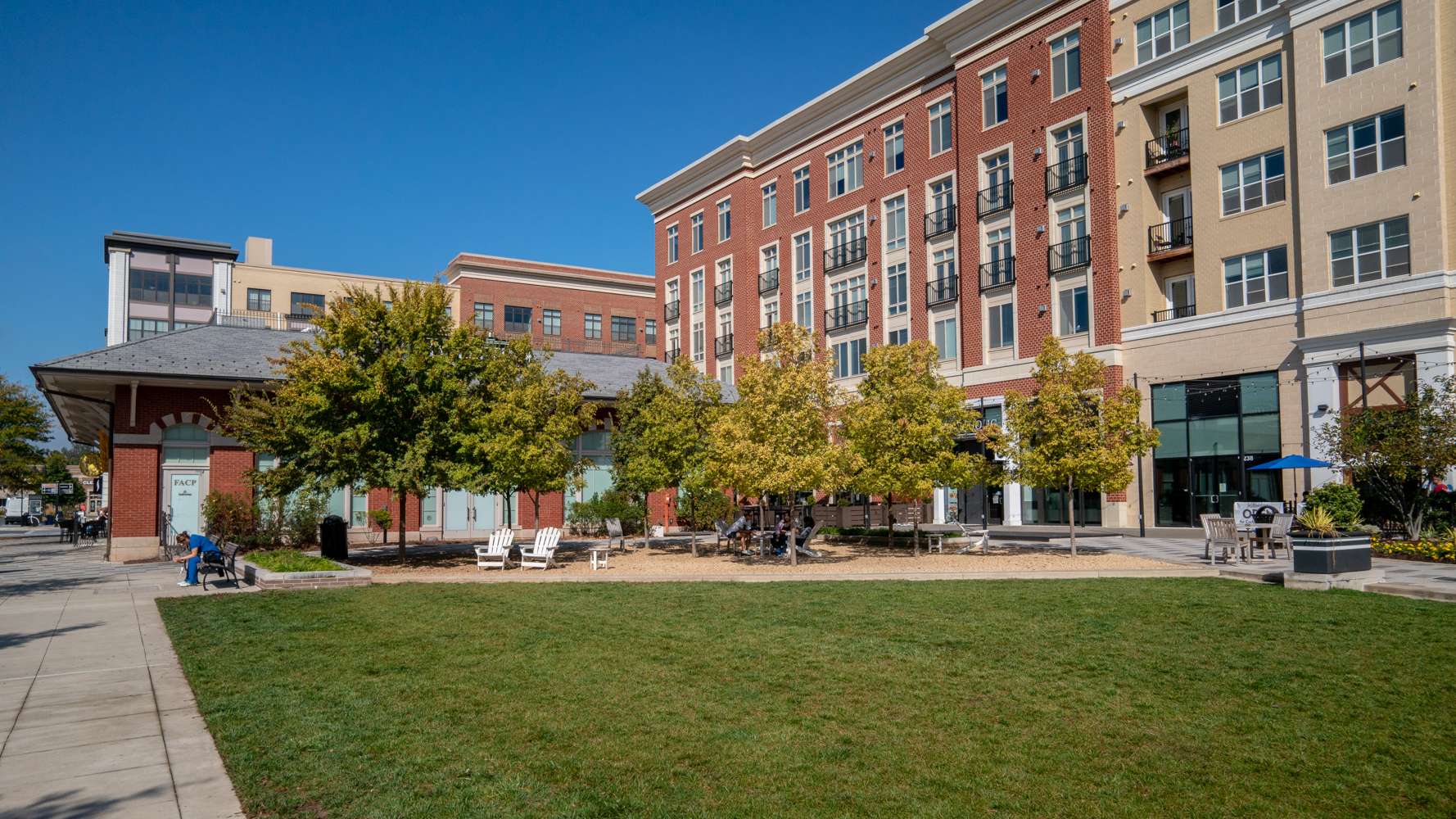
Is Landscaping a Capital Improvement? Which Services to Consider
Step back and take a hard look at your commercial property.
Would you want to shop, live, work or visit there? How’s your curb appeal?
It might be time to spruce your place up with some landscaping improvements.
But are they tax deductible?
Is landscaping considered a capital improvement? Sometimes. Basically, a capital improvement adds to the value of your property in a significant way, as opposed to repairs and maintenance, which preserve existing value.
So, a new paver walkway? Yes, it’s a capital improvement. Fertilizing your lawn? Nope.

Keep reading to learn more, as David Keffer, a branch manager at Level Green Landscaping, walks us through it, including:
Landscaping Improvements: The Need To Update
Is Landscaping a Capital Improvement? Sometimes
Updating Aging Landscaping
Making Landscaping More Environmentally Friendly
Updated Walkways Are Landscaping Improvements
Outdoor Common Areas
What’s NOT A Capital Improvement
Fall: The Landscape Improvement Season
Landscaping Improvements: The Need To Update
Chances are, your commercial property landscaping needs a boost.
“There’s been a lot of development for many years, and the buildings that were constructed in the 1980s and '90s are starting to look dated,” Keffer says.
Sound familiar?
“You need to make improvements to your landscaping as well as to your buildings,” he says.
The right landscape enhancements make your retail site more beautiful, welcoming, comfortable and current.
“Shopping centers built decades ago aren’t attracting retail tenants the way they need to,” Keffer says. “We’ve re-landscaped four or five of these retail centers, making them appealing and competitive.”

Is Landscaping a Capital Improvement? Sometimes
According to the Internal Revenue Service, a capital improvement meets one of these criteria:
- Fixing a defect or design flaw
- Creating an addition, physical enlargement or expansion
- Creating an increase in capacity, productivity or efficiency
- Rebuilding property after the end of its economic useful life
- Replacing a major component or structural part of the property
Basically, a capital improvement adds to the value of your property in a significant way, as opposed to repairs and maintenance, which preserve existing value.
Is landscaping considered construction? Sometimes, yes, especially when it involves adding enhancements like a patio, a rooftop garden, walkways or a retaining wall.

So, is landscaping considered a capital improvement?
It depends. Consult with your tax or accounting professional about your proposed project to be sure, but Keffer offers a look at a few projects that typically count:
Updating Aging Landscaping
The landscaping that was installed decades ago to beautify your commercial property’s landscape can now actually do more harm than good.
Fifteen years ago, junipers were the standard for commercial landscape design. Low maintenance, super tough — they made sense.
But these days, those sheared junipers look dated — and make properties look dated, too.
And don’t get Keffer started on Bradford pear trees. They were planted everywhere years ago on commercial properties, but they're no longer used in today’s landscape design.
The trend today is to use a much more captivating, casual combination of flowering shrubs and trees, perennials and ornamental grasses.
We make landscape improvements by designing interesting layered looks, with shorter plants like ground covers or low perennials near the foreground, slightly taller plants in the middle, and taller shrubs, grasses or trees for the back.
“Landscaping is so important in attracting customers and tenants to a property,” Keffer says.
A comprehensive update adds appeal and interest — and counts as a tax-deductible capital improvement.

Making Landscaping More Environmentally Friendly
In the 1980s, landscaping for commercial properties typically needed a lot of water, pesticides and mulch.
Updating it to make it friendlier to the environment not only qualifies as a capital improvement, but will save you money in the long run, Keffer says.
A few ideas for environmentally friendly landscaping improvements:
- Install plants that require less water, like native varieties. Native plants are plants that have grown in a particular area for thousands of years, without human introduction, so they automatically love living on your property. Natives are hardy and less susceptible to pests and diseases. Once they’re established, native plants typically need less water than non-natives.
- Replace water-hogging spray irrigation with drip irrigation, Keffer suggests. Unlike a typical sprinkler system that sprays water from irrigation heads, drip irrigation uses hoses pierced with tiny holes that allow small amounts of water to trickle slowly into the soil. There’s no water waste from evaporation because water isn’t spraying into the air.
- Replace areas of concrete with permeable pavers that handle water runoff better. Pollutants build up on solid surfaces like concrete and asphalt. Then, when it rains, these pollutants wash off and enter the stormwater system and the environment. Porous pavers allow rainwater to seep through, rather than pool and flood your property.

Updated Walkways Are Landscaping Improvements
If your property has old cracked concrete walkways, they’re not only unsightly, they’re a dangerous trip hazard. Consider replacing portions or entire stretches of walkways with pavers that can help break up the industrial look of a long stretch of concrete.
Portions of pavers incorporated in concrete walks can help identify main entrances, crosswalks, and other areas of interest.
This kind of comprehensive landscaping improvement counts as a capital improvement, Keffer says.

Outdoor Common Areas
In the quest to attract customers, tenants and visitors, you can’t beat a peaceful, beautiful common area.
In an office setting, it helps worker morale. Create an outdoor patio where employees can eat a sandwich, read a book, chat with colleagues and hold fresh-air brainstorming sessions.
If yours is an apartment community or HOA property, know that residents want to spend as much time outdoors as possible, for as much of the year as possible.
Fire pits, outdoor kitchens, and grilling stations positioned in a paver-covered common area are a big draw and encourage apartment residents to gather. They’re all smart landscaping improvements.
Patios are a natural addition to retail centers, too. Offer an inviting place to plop down those shopping bags and rest in the shade.
Don’t forget families with kids. Consider a playscape or a splash pool. When the kids want to stay, mom and dad hang around, too.
What’s NOT A Capital Improvement
There are lots of ways Level Green crews keep your property looking great:
- Mowing
- Weeding
- Blowing and edging
- Fertilizing
- Pruning
- Fixing hardscape damage
All important services. But not capital improvements, Keffer says.
“Those count as maintenance, more than a capital improvement,” he says.
Adding beds of seasonal color doesn’t qualify, either, he says. Since annual flowers only last for a few months before they need to be replaced, they’re not considered a long-term investment.

Fall: The Landscape Improvements Season
Any time is a good time to consider boosting your commercial property’s appeal.
But if your landscape improvements include installing plants, trees and shrubs, time the landscaping for September through November, Keffer says, for the best results.
“Fall is the best time to plant around here,” Keffer says.
The soil is actually warmer in the fall than in the spring. That means roots can get a good hold and get the nutrients they need. Then, after a nice winter’s rest, they’ll come back strong in the spring
Level Green Landscaping: Improvement Experts
Is landscaping considered a capital improvement? A lot of the time, yes.
At Level Green, we’re landscape enhancement experts, and can help you update and beautify your commercial property in a host of ways — many of which are tax deductible as a capital improvement.
If you’re not already a Level Green Landscaping client, we’d love to add you to our growing list of happy customers.
Our focus is on commercial properties like offices, mixed-use sites, HOAs, municipalities and institutions in Maryland, Washington DC and parts of Virginia.

Contact us at 202-544-0968. You can also request a free consultation online to meet with us one-on-one.
We’d love to hear from you.

Douglass Delano
Doug Delano (and Bill Hardy) opened Level Green Landscaping LLC in 2002 to offer Washington DC, Maryland and Virginia reliable commercial landscape maintenance services.


